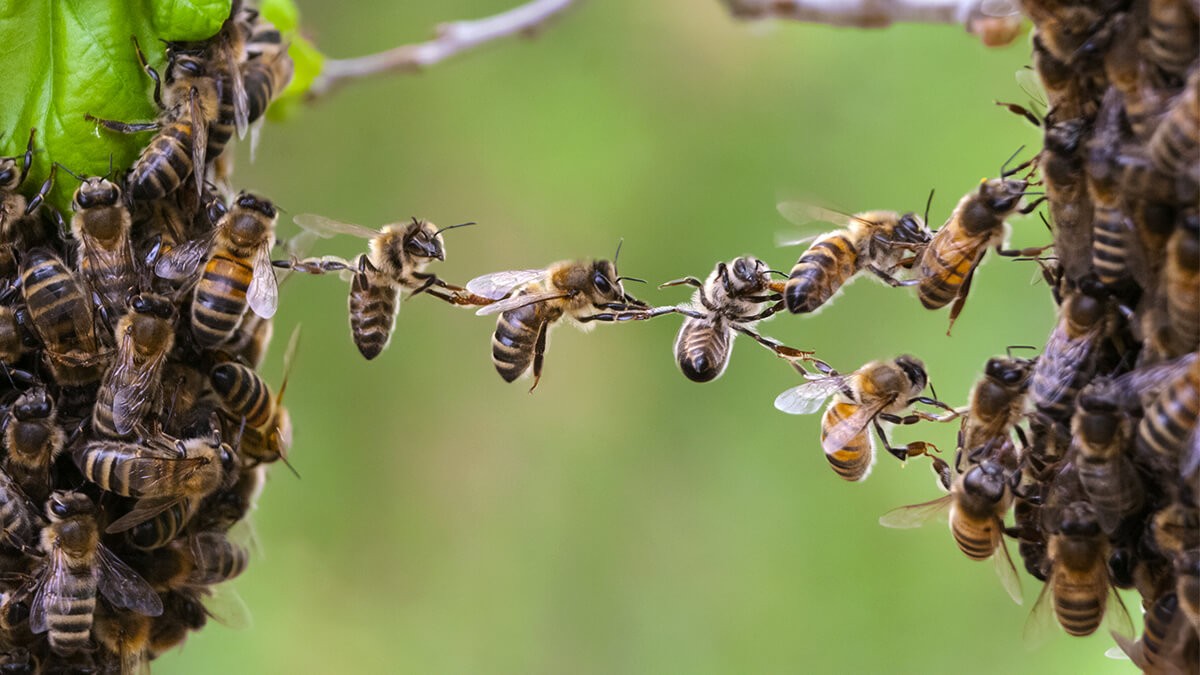Bee Facts – What Makes Honeybees So Special

Bees are fascinating creatures. We all know that they’re the best pollinators and how tasty their produce can be. But their brilliance goes beyond that. Here’s a collection of facts that will boggle your minds. Discover how brilliant the bees can be(e)!
- Half kilo of honey = 2 million flowers + 145 000 kilometres.
The nectar of two million flowers produces only half a kilo of honey. Suppose one bee is to make that amount of honey, it would have to travel 145 000 kilometres. That’s three times the circumference of Earth. - One bee - 1/12 teaspoon of honey.
In reality, the average bee’s lifespan (about six weeks in their most active summer period) is just enough for it to produce 1/12th teaspoon of honey. - The honeymaking process is more than 100 million years old.
The way bees create their honey hadn’t changed since when the species first appeared, which was around 100 million years ago. This is the only insect produced food that humans eat. - A worker bee’s maximum speed is 25 km/h.
This speed allows the worker bee to visit fifty to a hundred blossoms in one trip, which can be up to 10 km away from the hive. - Their wings beat 190 times per second.
The buzzing you hear comes from their fast-beating wings, which can reach 190 times per second. - Bees are acute navigators.
Bees have exceptional memory and learning, even though their brain is the size of a sesame seed. They calculate the distance from the hive by using the sun as a guiding point. - Bees have five eyes.
Three of those act as light receptors, helping the bee keep track of the sun at all times, even during cloudy days. Their two more developed eyes are composed of 6900 facets each, making the bees extremely good at perceiving movement. How good? The human eye can perceive movements separated by 1/50th of a second. Bee eyes can detect movements separated by 1/300th of a second! If a bee watches a movie, it would be a very slow slideshow to it. - Honeybees can recognise and remember human faces.
Their brains make out faces the same way as us – By identifying the shape of parts like eyebrows, ears, nose and put them together to make out the whole face. - They sting only once.
Bees are calm creatures and they won’t sting you unless agitated. They need to feel threatened or fear the hive will be destroyed. By stinging you, they lose their sting and then die. Don’t attempt to remove a beehive yourself! Contact professionals for bee treatment. They are trained to remove it safely from your property. It’s the safest way for you and the bees. - Bees communicate by dancing.
The way bees communicate where the good places for foraging are by dancing. When a honey bee finds a good nectar source, it returns to the hive and does the “waggle dance“. First, it gathers “listeners”, then tells the other bees where the spot is by relating its position to the hive and the sun in a particular part of the day. This dancing is incredibly articulate as it explains the location and the fruitfulness of the flower and the potency of the nectar. - Tens of thousands of bees in a hive.
The average size of a bee colony is between 20,000 and 60,000 thousand. This depends on the location of the hive and time of year, as the bee population waxes and wanes. - Male bees have only one purpose - to mate.
The sole purpose of the male bees is to mate with the queen. They don’t do any other work for the hive, hence the term “drone“. - Long live the queen! May she have thousands of eggs!
The queen bee has the longest lifespan of up to 5 years, and there is only one such bee in each hive. During the summer months, when the hive has to be the most active, she can lay up to 2500 eggs per day. - It’s always summer in the beehive.
Honeybees maintain a constant temperature of 34°C in the hive no matter the season. During the winter, they clump together to keep warm and go into almost complete hibernation. Worker bees cluster tightly around the queen to insulate her, as she is the most important. In the summer, you can hear the buzzing of the hive from a few meters. The reason for this is designated workers that act as air conditioning. They beat vigorously with their wings, fanning the air inside to keep the queen and brood from overheating. - Worker bees serve a variety of different purposes in the hive.
What’s fascinating about that is the fact their behaviour is hardwired through brain chemistry. Scout bees will fly far from the hive in search of food. Soldier bees will linger around the hive and protect it with their life. A small percent of the middle-aged bees serve the role of undertakers, pushing dead bodies out of the nest to prevent it from getting clogged. - No lack of personality.
Despite the bees seeming almost robotic in their organisation, bees have personalities. Studies have found that some bees can be adventure seekers, pushing the limits on how far they can fly from the hive, while others are timider preferring instead to gather from the nearest flowers. Some even have displayed a degree of laziness.
Read also: 13 Interesting Facts About the Australian Cockroach